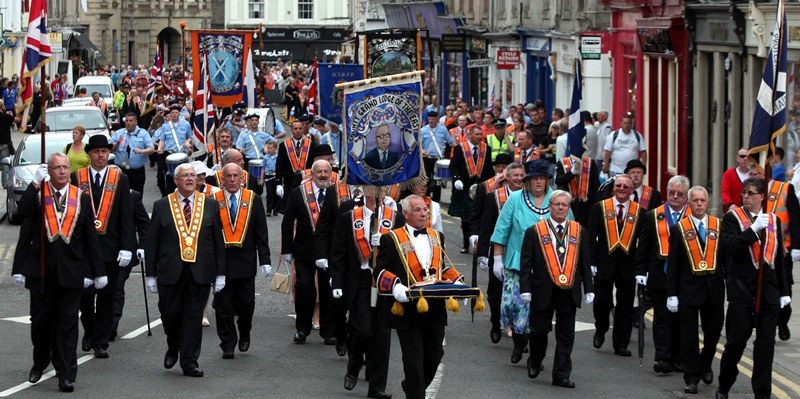The cost of policing religious marches in Tayside added up to more than £34,000 over the past two years, with one high-profile event accounting for more than half the total.
Just three of the 17 marches held in the region in 2009 and 2010 did not relate to loyalist organisations, according to information supplied by Tayside Police.
They included the two cheapest events a procession by Strathmore Christian Fellowship in Angus in April 2009, which cost the police £74 to marshal, and a procession by Monifieth Churches in the same month, which came in at £148.
In addition, the Scottish Islamic Peace March and Rally in March of that year culminated in around 300 people gathering in Dundee’s City Square to hear speeches from a number of local politicians and cost £1229 to police.
However the vast majority of the marches eight in Dundee, three in Angus and three in Perth & Kinross were by members of the Orange Order or other loyalist groups. The cost of policing each march ran from £235 to £2674 with one exception.
By far the single most expensive march was, perhaps not surprisingly, the controversial event organised in Perth last June by the County Grand Lodge of the East of Scotland to commemorate the 1690 Battle of the Boyne.
Preceded by dire predictions of “disorder, disruption and discontent,” the event attracted 4000 marchers and, organisers claimed, almost three times as many lined the streets to watch as the town centre was otherwise brought to a standstill.
The event had been staunchly opposed by local politicians and more than 1400 people had signed up to a Facebook page calling for it to be cancelled.
Against that backdrop and amid fears of public disorder the substantial police presence was made up of 100 full-time officers and 20 special constables, at a cost of £18,145.
In the event, the march passed without incident and police had to make just one arrest a prospective spectator who was later convicted of a sectarian breach of the peace when he was caught singing the loyalist anthem “The Sash” before the procession even set off.
The cost of policing religious marches in Tayside, however, almost pales into insignificance when compared to the Scottish force which handles the greatest number of such events.
Strathclyde Police had to deal with 247 loyalist and republican marches in 2008/09, with the largest single event, an Orange walk, costing just short of £600,000.
